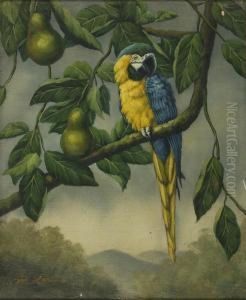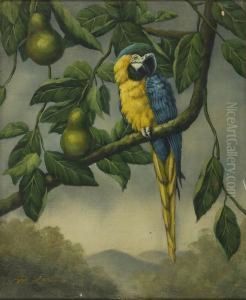Larkin Goldsmith Mead Paintings
Larkin Goldsmith Mead was an American sculptor born on January 3, 1835, in Chesterfield, New Hampshire. He is best known for his works that exhibit a neoclassical style, which was prominent during the mid-to-late 19th century. Mead gained recognition for his sculptures that often combined American themes with classical elements.
Mead's interest in art began at an early age, and his talent was evident even as a young man. He initially worked as an illustrator and artist for a newspaper in Brattleboro, Vermont, where his father had moved the family. His early work gained attention, particularly his sculpture of a large snow angel, created on the Brattleboro common, which captured the imagination of the local community and led to his first significant commission.
In 1855, Mead moved to Italy, a center for artists wishing to study the classical style and techniques of the old masters. There, he joined the expatriate community of American artists in Florence and began studying under the tutelage of sculptor Thomas Ball. Italy's rich artistic heritage had a profound impact on Mead's work, and he soon became a prominent figure in the American neoclassical art movement.
Mead's most famous works include the statue 'Ethan Allen' at the Vermont State House, the 'Vermont Soldiers' monument in Gettysburg, and the allegorical figure representing 'America' on the National Monument to the Forefathers in Plymouth, Massachusetts. He also created the 'Recording Angel' for the Soldiers' Monument in St. Johnsbury, Vermont, and the 'Triumph of Ceres' for the 1876 Centennial Exposition in Philadelphia.
During the American Civil War, Mead was commissioned to create a statue of President Abraham Lincoln, which he completed in 1869. The statue, known as the 'Lincoln Tomb', is situated at the President's gravesite in Springfield, Illinois. Mead's work was celebrated for its embodiment of the American spirit and its capacity to capture the likeness and character of his subjects.
Mead's contribution to American art was significant, and his works continue to be valued for their historical importance and artistic merit. Over the course of his career, he received numerous honors and was a member of various artistic societies. Larkin Goldsmith Mead passed away on October 15, 1910, in Florence, Italy, leaving behind a legacy as one of America's notable neoclassical sculptors.

